In September 1942, massacres were carried out in the towns in the northern Baleros area - Kobylnik, Miadel, Kornitz. In September 2012 I was there with my niece to try to see how my mother spent her childhood until and during the Holocaust, in two places: Lake Naruch and the nearby forest where she hid with her family with the help of the partisans
The trip took place in September 2012, the article was first published on April 7, 2013
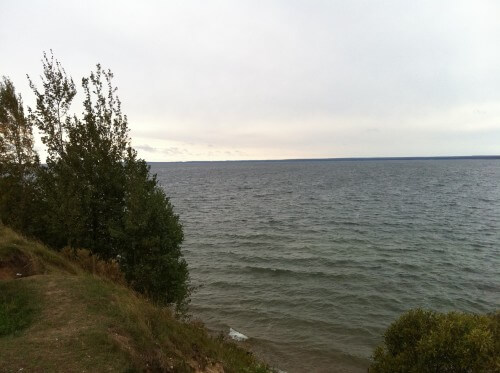
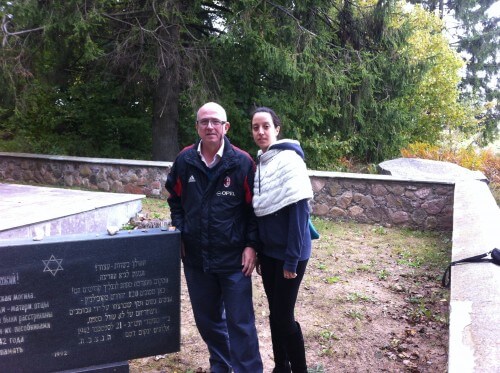
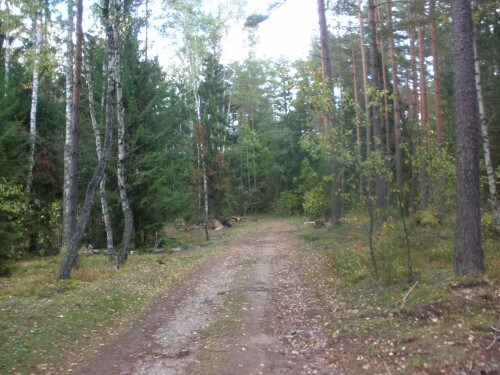
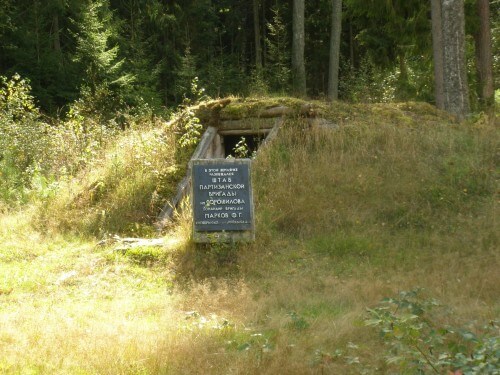
First of all, many thanks to everyone who helped me organize the trip: Asanat Sbirsky (daughter of the late Meir Sbirsky), Yehshua Sbirsky, Aryeh Gaskin (Chairman of the Miadel Veterans Committee), Vaslava and Svetlana Sohansky from Miadel (very nice and educated people who help the survivors to maintain the sites) for the hospitality, transportation and escort at all the sites and the last Jewish resident of Miadel Monk Gordon for his help with translation and coordination.
In September of this year, I did a walk of about a kilometer in a forest. Sounds like just a Shabbat walk in the Carmel forests, but the forest in question is a unique forest - the forest where my mother hid for a year and a half after she was saved from death several times in her hometown and in the ghetto in the district city.
The forest where I walked together with my niece Yasmin Shir-Raz and Slava Sohansky, is in Belarus between the towns of Kobylnik (today Naruch after the lake on whose shore it lies) and Miadel - the district town. We were in Belarus for only 48 hours, but that was enough to understand how the Nazi extermination machine worked. I thought about this terrible efficiency in all the sites we visited, as well as trying to understand how my mother lived as a child. Although she talks about it freely, until you get to the sites themselves, it is difficult to understand the plot without the appropriate background.
September 21, 1942, seventy years before this visit, can be defined as the most important moment in my life, even though it would still be 19 years before I was born. This is the day when the Nazis rounded up the rest of the Kobilnik Jews - those who survived the persecution for a year and a half since the Nazis entered the area and tried the Soviets.
According to the testimony of my grandfather, Yosef Blinder, in the archives of Kibbutz Lohlim Hagat, each time family members of people who the Nazis claimed had done something they were forbidden to do, such as hiding Jews from other towns, were executed, but on Yom Kippur of 1942, the Nazis were angered by the escape of a number of men from the town into the forest , and they decided to eliminate all the residents of the town. The residents were brought to the cultural center, and there a selection was made for them - those whose survival was important due to professional knowledge, were transferred to the ghetto in the nearby district city of Miyadel, and the others - 120 in number - men and mainly women and children were placed at the entrance of a huge pit dug at the entrance to the town and shot to death. Among the dead were my mother's aunt Kayla Karbitsky and her two children Benjamin and Yitzhak - children aged 4 and 6. It is not clear what they did to the Nazis who sentenced them to death.
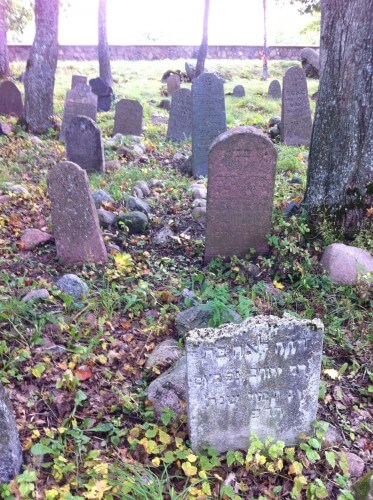
All the other Jews, including my grandfather, my grandmother Atel, my mother Zfura, and her sister Pnina, were transported on foot (the children were put on a cart) a distance of about 17 kilometers through the forest and on the bank of a lake to Miadel, where they joined the refugees of a similar massacre that took place there that day.
A few weeks later, a group of partisans broke into the town who were instructed by the Russians to harass the Germans and occupy a settlement from them, one of the department commanders was a Jew, Moshe Shegalchik, and before retreating he managed to liberate the ghetto and the seventy residents who survived fled to the forest, where they suffered from being hunted by the Germans, typhoid and hunger, until liberation by the Soviet army in July 1944.
Today the forest looks relatively well maintained. Although we were again in September, it was hard for me to understand how it was possible to hide in such a forest, when the distance between a tree and a tree is several meters, but it seems that dozens of square kilometers of forest did their job, and yet it is possible to hide there. In the thick of the forest, a small camp of the partisans was also preserved with three dugouts (Zimlenkas) - houses made of logs connected to each other, and except for the roof they are actually inside a large dugout.
When we arrived in Kovilnik, we stopped for a moment by the lake, despite the cold and rain that prevailed that day (September 15, 2012). The idea was that before we get to the mass grave, we should try to understand how the Jews lived their daily lives before the town became a hostile place for them, especially my mother's stories about the beautiful lake. Indeed the lake, which according to dry data is the largest in Belarus, looks like a pastoral place, not a potential genocide scene. They had paragliders flying in the air, and at the entrance to one of the villages there is a sign with the name of the settlement and the year it was founded in the Middle Ages, a kind of statue dangling from the sign in the form of a net with several large fish in it.
Traces of a storm that was there a few days earlier left many trees that fell on their neighbors. Sohansky said that such a tree also damaged the mass grave and he and his family arrived at the site and cleaned it up, as they always do in such cases for the Kobilnik Veterans Association.
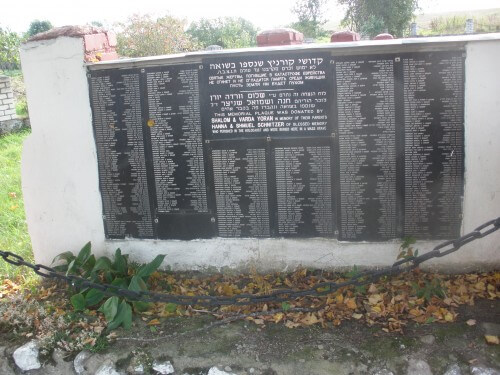
Then I came to her situation, which I have seen many times in the annual commemorations held by the town's survivors, at the initiative of Yitzhak Gordon and the late Meir Sabirsky. But it's different to understand that it's not just a small sign but a huge stage about 15 meters long and about 3 meters wide that takes time to get around. Apparently the pit under her was not small either.
I won't bore you with the story of the many tombstones I saw that all contained mass graves - of course the mass grave in Mydal, and a number of 'smaller' mass graves in Kobilnik and Mydal that were dug for the victims of smaller pogroms in 1941-1942, when there was still someone to prepare the graves for them in real time.
But the biggest shock was shortly before we left Belarus, on the way to the train station in Maldchena we stopped in a small town whose name is also familiar to me from childhood - Kornitz. It turns out that the shock was so great that the local authorities also turned the place into a memorial site, and there were even remains of flowers and candles that were placed there on the 70th anniversary of the massacre there - which took place on September 8, 1942, about two weeks before the massacre in Kovilnik and Miadel. The Schnitzer family - one of the survivors is the one who erected the tombstone there in memory of no less than 1,040 Jews who were killed there in one day.
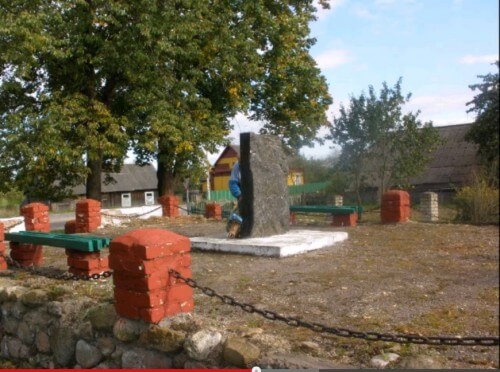
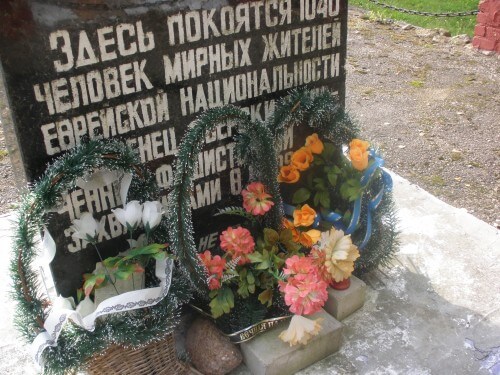
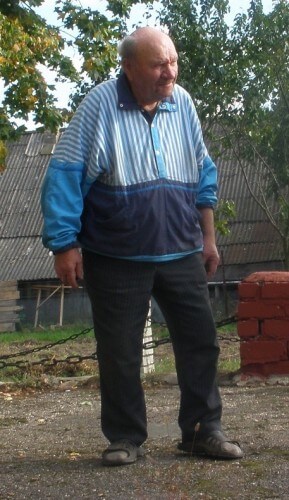
A local elderly man saw us patrolling and taking pictures there and came forward and introduced himself as an eyewitness named Osif Tarbish, now 84 years old, and at the time of the massacre he was 14 years old. Using the shared (little) knowledge of the German language of Slava Sohansky and myself, and some hand movements I was able to understand what happened. At first the place was used as the town's ancient Jewish cemetery, and before the massacre the Germans cleared the tombstones and used them as building materials, dug a hole, dragged a group of Jews to it each time, shot them and burned their bodies to make room for more and finish their satanic work in one day.
And another lesson I learned (not all my family members think like me), the well-known lesson about the question of where God was in the Holocaust. Those who read the opinion columns on the site know what my opinion is on this matter. I preferred to concentrate on the visit on the question of how my mother and her friends lived their daily lives in their place of birth, and how they even survived in the forests. I was able to experience this (and I understand Yasmin too) in 48 hours of tours following my mother's childhood.











5 תגובות
I didn't mean your and our holocaust. The story is very beautiful. We really are not capable of what it is to be persecuted, illegal, and to survive in the wild without access to groceries, jade. And also how quickly people accept that someone else is illegal, not like them and persecuted.
There is a lot of information on the net, perhaps also for families who did not record those who perished in the Holocaust as part of Every Person Has a Name (unless someone with us recorded and did not say) on 3 sites: Yad Vashem, my heritage, and Beit Hatfutsot. The network effect makes information available that wasn't there before. The first two reservoirs are heavier. By researching the Internet, families can roughly trace their history, up to the expulsion of the Spaniards from Spain, and see that they passed through 10 countries from there to Israel. As in history - there is no 100% certainty, you go by last name and if he is not a priest or a Levite you can go back. I also saw our last name splitting into Sephardi and Ashkenazim (in Wikipedia they explain it - not me) somewhere from the 12th century. I purposely do not mention surnames. That is, a family branch that moved to Hungary is called Ashkenazi, and a family branch that moved to Spain and from there to the Balkans is called Sephardi, and another branch moved to Africa.
nice story.
For years I thought that my family did not experience the Holocaust because we are Sephardic. I recently found out through the Yad Vashem website what was clear before, we just didn't realize that 36 members of my father's family perished (Thessaloniki, France), 6 members of my mother's family (Thessaloniki, France) and my wife's family (1360) - Macedonia, Thessaloniki, France. Simply in those days without e-mail, cell phone - when a family member immigrated to another country, ties were often severed. And it was seemingly clear - because my paternal grandfather, for example, had 5 brothers and two were left, so it should have been clear that the other three who were married with families perished. That's why we are all basically one people, and 70 years ago entire families were wiped out - and today we forget.
nice story.
For years I thought that my family did not experience the Holocaust because we are Sephardic. I recently found out through the Yad Vashem website what was clear before, we just didn't realize that 36 members of my father's family perished (Thessaloniki, France), 6 members of my mother's family (Thessaloniki, France) and my wife's family (1360) - Macedonia, Thessaloniki, France. Simply in those days without e-mail, cell phone - when a family member immigrated to another country, ties were often severed. And it was seemingly clear - because my paternal grandfather, for example, had 5 brothers and two were left, so it should have been clear that the other three who were married with families perished. That's why we are all basically one people, and 70 years ago entire families were wiped out - and today we forget.
Reflections on Holocaust Day.
The Jews today have enough nuclear power to wipe out Germany and the surrounding area within minutes several times. Does anyone even think about it? Ili Paat - by!
The Arabs never stop mentioning the Nakba - their holocaust (the Elek Holocaust, less than one day in Auschwitz and two weeks in Syria). They don't recover, they don't forgive, and oh my god if they have weapons of mass destruction.
May the world perish and may the sea burn. The main thing was the slaughter of Yahud.